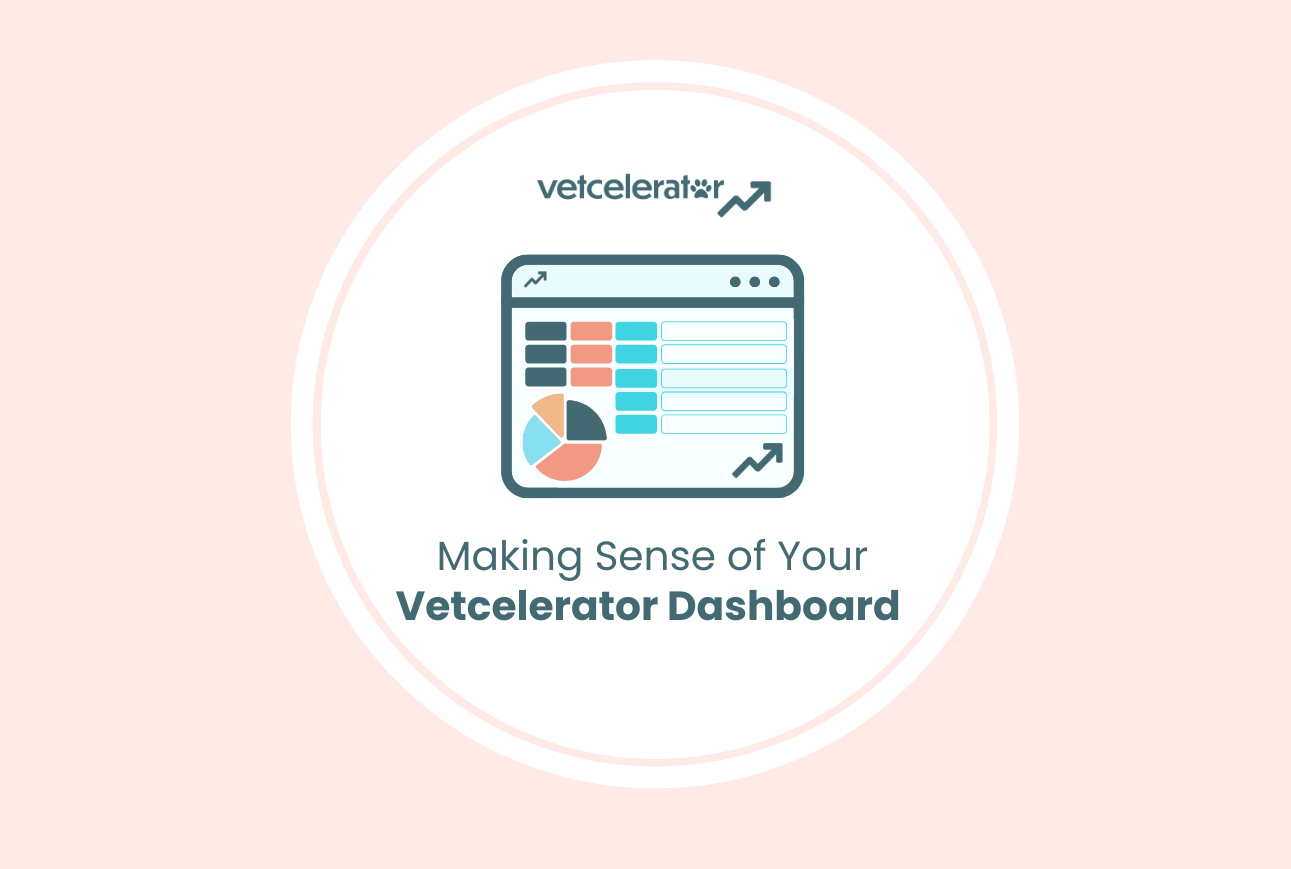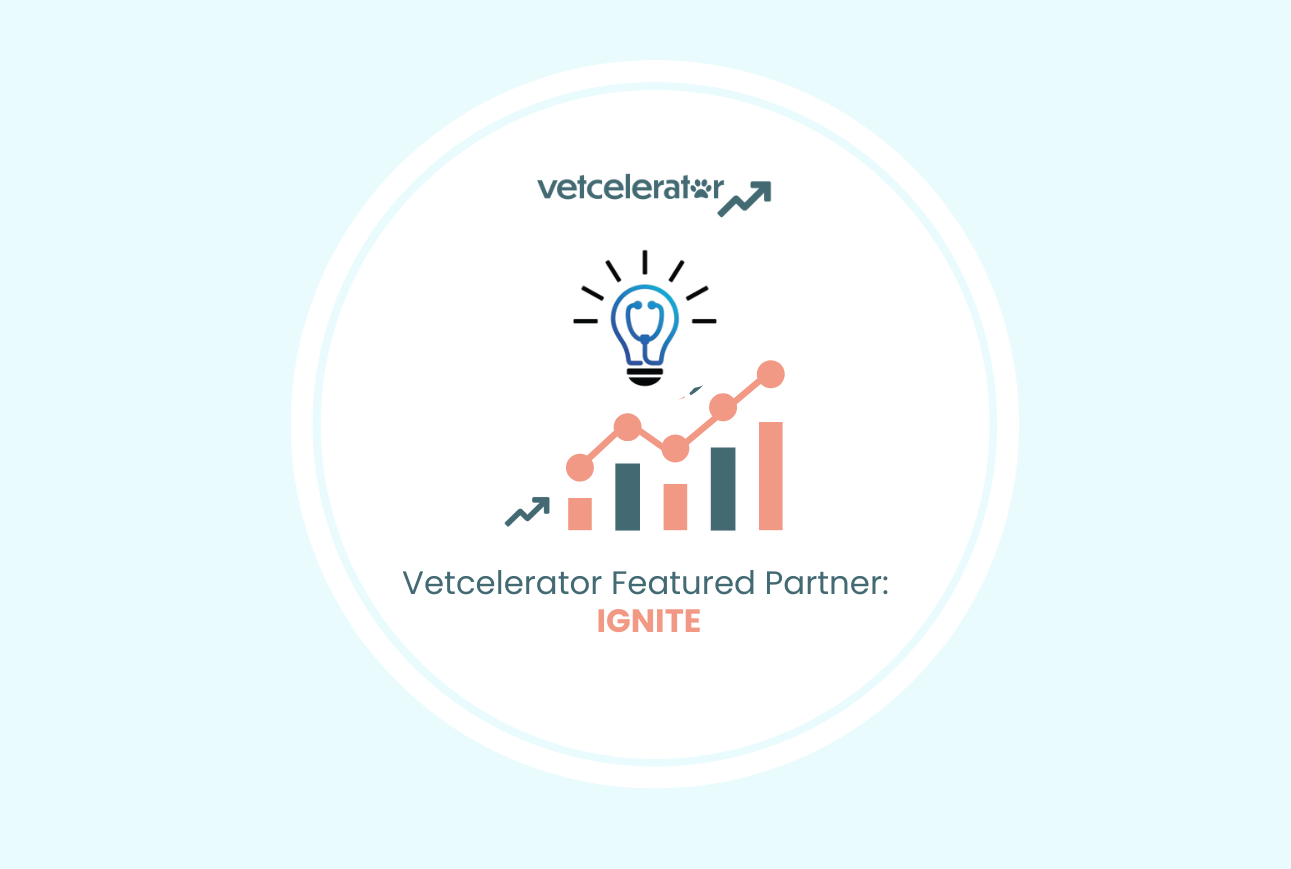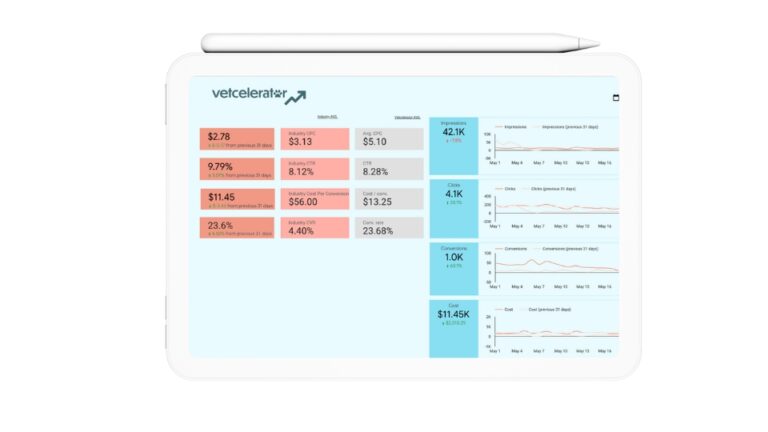
Your performance dashboard at Vetcelerator tracks four key advertising metrics, each compared against veterinary industry benchmarks and Vetcelerator’s client averages. These insights give you clear, actionable visibility into how your vet clinic’s digital ads are performing across your campaigns.
Metric #1: Cost Per Click (CPC)

The first metric, CPC, is how much you pay when someone clicks your ad.
Why It Matters
CPC determines how far your budget goes. For example, if you spend $100/day and your CPC is $5, you can expect around 20 clicks daily. If your ads run from 9 AM to 5 PM, that’s about 2.5 clicks per hour. A high CPC can limit your exposure. Tracking this metric will set realistic expectations and assess the cost-efficiency of your campaigns.
What Affects CPC?
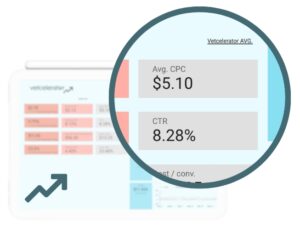
- Location: High-density areas often have higher CPCs due to greater competition.
- Keywords: Some terms cost more than others. “Vet near me” is highly competitive and expensive. Something more specific, like “senior cat dental,” usually costs less.
Metric #2: Click Through Rate (CTR)

The second metric, CTR, measures how often people click your ad after seeing it. It’s calculated by dividing the number of clicks by the number of impressions (times your ad was shown).
Why It Matters
CTR reflects how well your ad captures attention and drives interest. For example, if your ad is shown 1,000 times and receives 30 clicks, your CTR is 3%. A high CTR suggests your messaging and targeting are working well together in your veterinary ads.
What Affects CTR?
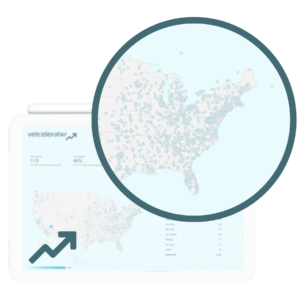
- Ad Creative: Clear, relevant headlines and visuals boost engagement.
- Targeting: Ads shown to the right audience naturally get more clicks.
- Call to Action (CTA): Strong, direct CTAs can significantly increase your CTR.
- Keyword Relevance: Ads aligned with search intent tend to outperform generic ones.
Metric #3: Cost Per Conversion (CPA)

This metric shows how much you’re spending, on average, to generate a conversion. A conversion for vet clinic ads is typically defined as a form submission, phone call, or booked appointment.
Why It Matters
Cost Per Conversion (CPA) measures how effectively your ad spend delivers real results. These results are typically appointments booked, forms submitted, or calls made by a pet owner. For example, if you spend $5,000 and generate 200 conversions, your CPA is $25. This figure reflects the strength of your entire marketing funnel, from ad to action. A consistently low CPA means your campaigns perform efficiently and your investment works hard to generate meaningful outcomes for your vet clinic.
What Affects CPA?
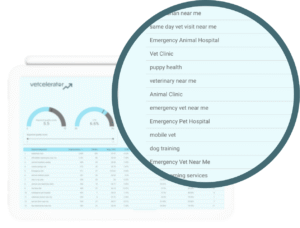
- Ad Quality: Ads that generate high-quality clicks convert more efficiently.
- Landing Page Experience: Clear, mobile-friendly pages with direct calls to action improve conversion rates.
- Audience Targeting: Reaching the right people who are most likely to act lowers conversion costs.
Metric #4: Conversion Rate (CVR)

This metric shows the percentage of people who take action after clicking your ad (e.g., booking an appointment, calling the clinic, or filling out a form).
Why It Matters
CVR highlights how well your campaigns and landing pages work together to generate real outcomes. A 10% CVR from 100 clicks equals 10 meaningful actions. High CVRs show that your targeting, messaging, and user experience are aligned.
What Affects CVR?
- Landing Page Quality: Clear, fast-loading, mobile-friendly pages encourage action.
- Ad Relevance: When the message matches the user’s intent, conversions increase.
- Call to Action (CTA): Specific, compelling CTAs guide visitors to take the next step.
- Audience Fit: Reaching users who are ready to act improves conversion performance.
Access Your Data with the Vetcelerator Dashboard
Log in to the Vetcelerator Client Portal to view your real-time performance dashboard.
This multi-page dashboard gives you full visibility into your veterinary clinic’s ad performance, what’s working, where you’re gaining traction, and how your results stack up against industry standards and Vetcelerator benchmarks. It’s built to give you confidence that your investment drives outcomes.
Not yet a member but interested in digital ads for your veterinary clinic? Contact us to see how Vetcelerator can expand the reach of your practice to local pet owners.


